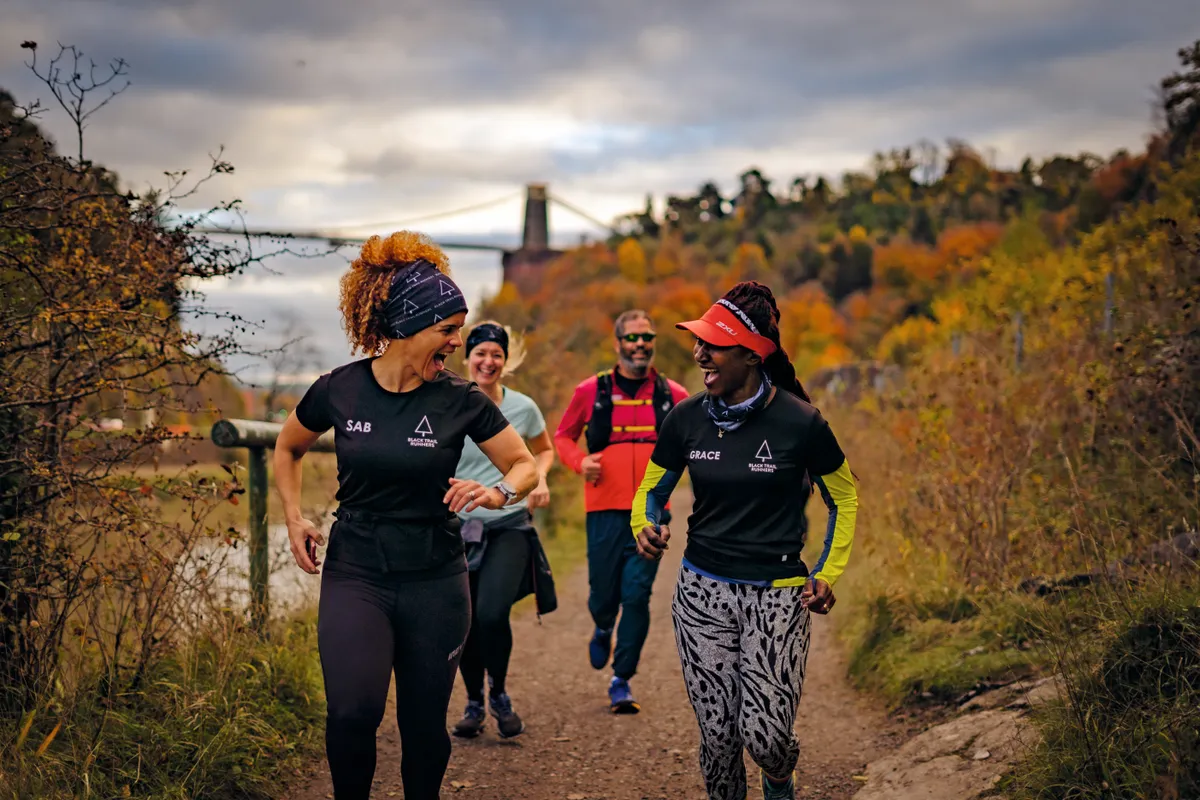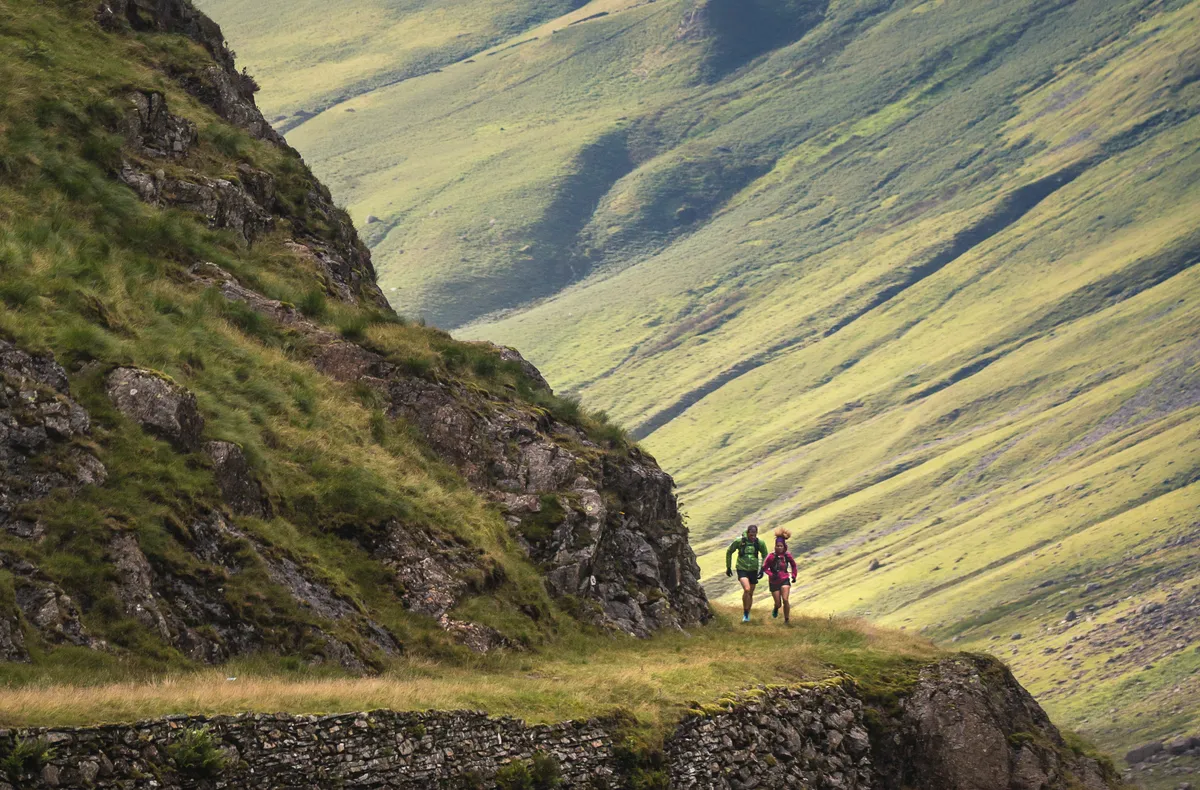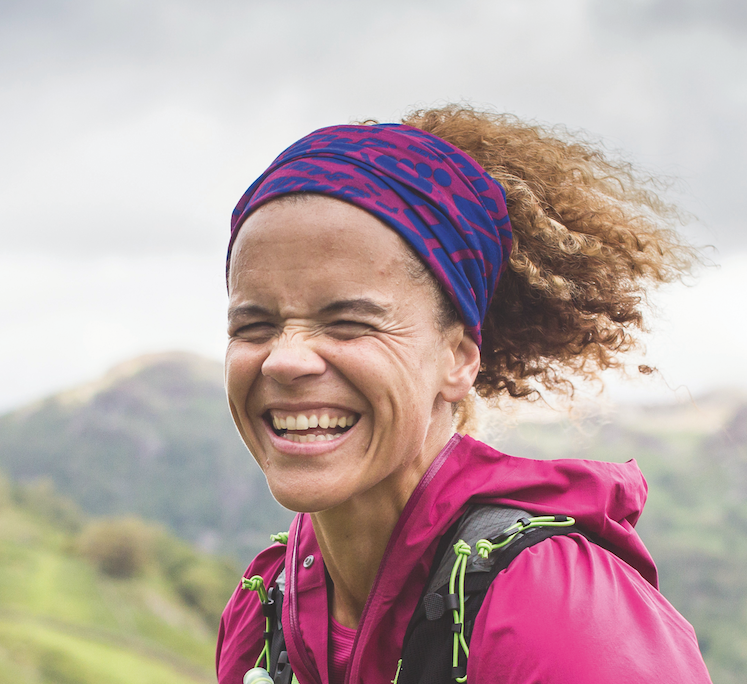Trail running – no matter what your level of fitness – is for everyone. No matter how fast or slow you choose to move, this activity can – and will – deliver moments of utter joy and unadulterated bliss due to the strong connection formed between your body, mind, and the natural space you move through. For me, an hour on the trail is the gift that keeps giving.
For many people, the idea of trail running can be a little intimidating. But with a few simple guidelines, it may just turn out to be the best thing you've ever done.
Our beginner's guide to trail running explores its benefits, how to get started, and the things you'll need to make your run as enjoyable as possible.

What is trail running?
Trail running is a form of combined running, walking – and sometimes even climbing – that takes place in natural environments such as fields, woods, fells, and mountains. If you look down and the terrain and what you see isn’t human-made, you can normally classify it as a trail.
Routes can include forest fire roads, dirt roads, sand, grass and woodland trails and, a personal favourite of ours, coastal trails such as the South West Coast Path. Fell running or hill running, meanwhile, is more hill-focussed and often on rougher, unmarked terrain.
Is trail running harder or easier than road running?
It depends on the trail. If I am running along a shady canal towpath on a warm summers’ day then, compared to running along a pavement in full sunlight, the trail run would feel easier. But on the flip side, if I am fast-hiking up the side of a fell, or mountain, as part of my trail run, it will feel significantly harder than a road run due to the terrain and incline.
Trail running is totally different to road running due to the additional factors you need to consider, such as undulating terrain and adapting to conditions/obstacles underfoot. You're also unlikely to come across a style on a road!

What are the benefits of trail running?
The mental health benefits of being outside, being in natural environments, have been proven. There is no better way to switch off and reconnect with your body and mind than through exercising in green spaces. The softer terrain also sends lower rebound forces through your limbs compared to running on Tarmac, reducing injury risk. Many new runners experience injuries and niggles when taking up road running but, due to the flexibility and adaptability that trail running demands, overuse injuries are less common, and the whole body is strengthened.

What do I wear for trail running?
Normally the same apparel as you would for any form of exercise – leggings, shorts, t-shirt. You should aim for clothing made from fabric that ‘wicks’ sweat away (removes it to the outer layer of the fabric). Additionally, you might want to carry a light waterproof jacket or mid-layer top just in case you get cold. The distance you are running, and weather conditions, should dictate clothing choices.
Looking for footwear? Read our guide to the best trail running shoes.
How do I start trail running?
Parkrun is a great introduction to trail running events. These free 5km timed events (they’re not known as races and walking them is fine) are held in parks, woodlands, hills, beaches and open spaces across the UK on Saturday mornings for adults (5km) and Sunday mornings for juniors (4–14-year-olds, 2km). To start, set up your account on the Parkrun website. At the last count, there were around 1,300 across the UK. For longer trail-running races, events run by Always Aim High, Durty Events, Endurancelife and Maverick come recommended.
What do I need to take on a trail run?
Always carry a fully charged mobile phone in case of emergency and ensure you have ICE contact details stored. I also ensure I have a GPS mapping app installed on my device – such as the OS Maps app – to refer to should I need to orientate myself. I also run with a lightweight running backpack to store water, a snack, a small medical kit (plasters, blister plaster, a bandage etc.) and – if I need it – a jacket.
Trail running tips: how to get started
- Reach out– Follow me online and ask questions. If I can’t help you, I’ll know someone that can.
- Start small – My motto is ‘small steps, big strides’. You want to select a distance which, for you, is achievable and on terrain that is manageable as a new trail runner. Think about your local area and the green spaces around you. It may be that you decide to walk/run for a mile – as I did when I started – around the local park. That’s a great place to start.
- Invite a friend – Let your friends know what you plan to do and that, if they want to join you, that they are welcome. Although a great solo activity, trail running with others is joyful too – time flies when you're chatting. From a safety point of view, you may also feel better running with someone else while you explore new routes during the early days of your journey.
- Footwear– If you think you like trail running then you’ll need a pair of trail shoes. They are different to road trainers (they have more grip). Ask for advice or visit your local sport shoe store to see what’s on offer.
- Find a trail– That means any green space. The local park is a good start.
- Walking is not cheating– The nature of trail running is that, ultimately, it will include elements of walking due to the terrain. Walking does not mean you have failed. It means you are sensible.
- Buy a local map/use an online navigation app– Get to know your locale. You’ll be amazed to find hidden paths you never knew existed! Or use a navigation app like the OS Maps app that makes is easy to find your bearings, create a route and follow it.
- Mobile phone– Make sure it’s fully charged. Why? In case of emergency and also to take amazing photos!
- C.E– Carry something on you that clearly has your emergency contact details. I keep a laminated card in the back of my phone case.
- Food– I like to have an emergency snack on me. High carbohydrate. A snickers bar works for me.
- Hydration – Depending on your distance. I always like to carry some water, just in case.
- Join Black Trail Runners– We are a community and campaigning charity that seeks to diversify trail running. If you want to join – no matter what your skin colour – you are welcome. Find out more on the Black Trail Runners website
In Sabrina’s new book Black Sheep: A Story of Rural Racism, Identity and Hope, among other important topics, she discusses her journey in running, her first trail run, and how she is working to make the sport more diverse and inclusive. Buy it here.
